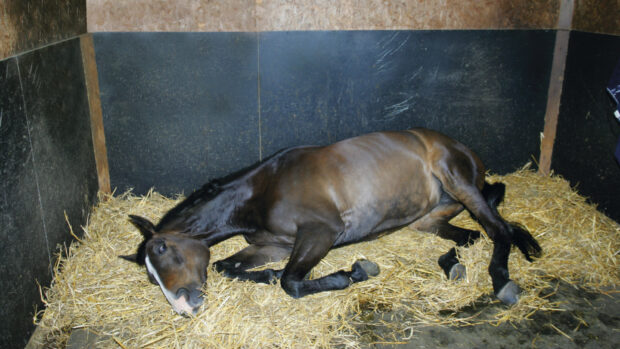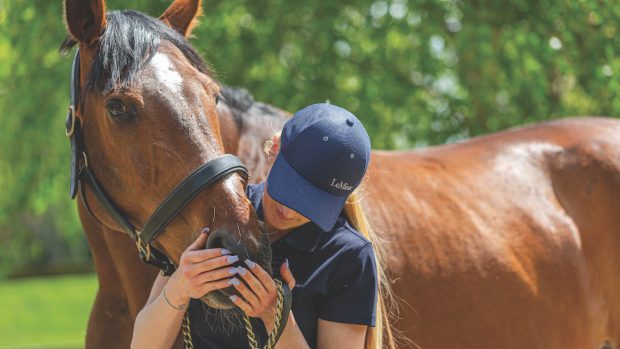Colic is a term used to describe abdominal pain, so a horse with colic is basically suffering from a form of “tummy ache”. By understanding how to prevent colic in horses and making changes to your horse’s daily management where appropriate, you may avoid facing a traumatic situation as well as an expensive vet bill.
The causes of colic can be numerous, and the situation can range from being fairly innocuous to being potentially fatal, so veterinary advice should always be sought if colic is suspected. While many of the things we do with our horses, such as stabling and competing, can increase the risk of colic, there are some simple things you can do to reduce the risks.
Potential risk factors for colic
- Poor feeding practices, such as feeding mouldy feed, or feeding large amounts of hard feed in a single meal
- Recent or sudden dietary changes (including changes in forage or turnout on to lush pasture)
- High starch, low forage diets
- Inadequate water supply or failure to drink
- Poor teeth or lack of dental care
- Stress, including travelling, competing or changes in routine
- Stereotypical behaviours such as wind-sucking and crib-biting
- Long periods of confinement (for example, during box-rest)
- A high worm burden or previous worm damage
Tips to help prevent colic in horses
- Select feeds that are low in starch and high in fibre to aid gut health; if extra energy is needed, choose a feed with a higher level of oil
- The amount of energy fed should be appropriate to the horse’s condition (an overweight horse needs a low-energy diet)
- Look for controlled starch levels (maximum 20%), remembering that the amount of starch that can be tolerated is dependent on the individual horse
- Keep meal sizes small; less than 2kg and less still for ponies
- Try to avoid situations where your horse may ingest sand. If your horse lives on sandy land make sure you used buckets, mangers and haynets to help to reduce unavoidable intake
- Allow free access to forage whenever possible, whether that is in the stable or via turnout
- Maintain a regular worming programme, as recommended by your vet or suitably qualified professional with expertise in this field
This advice was first published in H&H’s spring feeding guide pull-out.
Check out Horse & Hound’s Vet Clinic pages in the magazine for the latest expert veterinary advice, on sale every Thursday.



